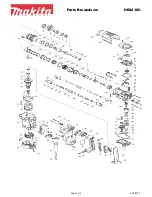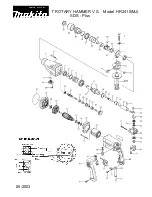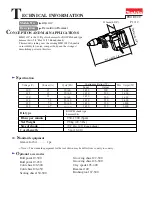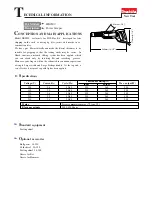
MAINTENANCE
For maximum performance, it is essential that the Drill Press is properly maintained. Always
inspect before use. Any damage should be repaired, and faults rectified.
If the mains lead is worn or cut, or damaged in any way, it should be replaced immediately.
Please refer to the trouble shooting chart on page 15 . If you are unable to rectify any faults,
please contact your local dealer or Clarke International Service Division on 020 8556 4443 for
assistance.
Monthly
(When in constant use)
1.
Check tightness of mounting bolts, and, head and column securing set screws.
2.
Check belt for wear and replace if frayed or damaged in any way.
3.
Blow out any dust that may have accumulated in the motor fan.
4.
Apply a thin coat of wax paste or light oil to the table and column for lubrication and
to help prevent corrosion.
Lubrication
All bearings are packed with grease at the factory and require no further lubrication.
After use
Remove all swarf from the machine and thoroughly clean all surfaces.
Components should be dry, with machined surfaces lightly oiled.
Always remove drill bits, and store in a safe place.
CUTTING SPEEDS
Factors which determine the best speed to use in any drill press operation are:
• Kind of material being worked • Size of hole • Quality of cut desired • Type of Drill
Generally, the smaller the drill, the greater the required RPM. In soft material, the speed
should be higher than for hard metals.
As a guide, the drill speed for a given drill bit size, is according to the table below.
14
2500
1900
1400
890
500
in
3/8
1/2
-
-
-
mm
9.5
12.5
-
-
-
in
7/32
11/32
15/32
-
-
mm
5.6
8.75
12
-
-
in
3/32
5/32
1/4
3/8
1/2
mm
2.4
4
6.4
9.5
12.5
Alum, Zinc
& Brass
Iron &
Mild Steel
Wood
Speed Range
(RPM)
Summary of Contents for Metalworker CDP101B
Page 1: ...0307 SERIAL No ...





































